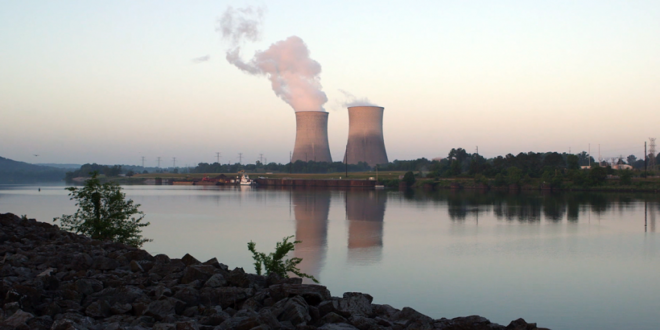The start of a much-delayed nuclear plant in Finland has helped bring down electricity prices by more than 75 per cent in the Nordic country, chief executive of Finland’s national grid operator Fingrid has said.
The Olkiluoto 3 (OL3), Europe’s first new nuclear plant in 16 years, began operating in April and is capable of meeting up to 15 per cent of the country’s power demand. Nuclear made up a third of Finland’s total electricity generation in 2021, Jukka Ruusunen told The National on the sidelines of a media event in Helsinki.
Average spot electricity prices in the country fell to €60.55 ($65.69) per megawatt hour in April from €245.98 per megawatt hour in December, a decrease of 75.38 per cent, according to Nord Pool, a physical electricity exchange.
In December, Finland, which halted electricity imports from Russia over its invasion of Ukraine, was preparing for rolling power cuts due to high energy demand for heating during the winter.
“We have had more stability in the system because of OL3. It’s a huge nuclear plant, one of the biggest in the world, connected to a small system. It has its own risks, which we are happy to follow up on,” Mr Ruusunen said.
The 1,600-megawatt Olkiluoto 3 nuclear power plant joins two other reactors, each with 890 MW of capacity, at the site in Eurajoki, western Finland.
Despite rising contribution of nuclear power, Fingrid expects wind to be the largest energy source by 2027 amid rising investment.
“[Nuclear] it seems is not very attractive for the investors. This is what they say. But, it’s an option and I’m sure that our politicians would be in favour of these decisions,” said Mr Ruusunen.
“And then [there’s] the business case and who dares to put billions of euros into nuclear?”
Last month, the EU’s energy ministers held separate meetings to thrash out a common path on whether nuclear power should be incorporated in the bloc’s renewable goals.
France has historically invested massively in nuclear power programmes. More than 70 per cent of its electricity is derived from nuclear energy.
The Czech Republic, Hungary and Poland are among EU countries that are pushing for nuclear power to be incorporated in the bloc’s renewable goals.
Last year, the European Parliament supported regulations of the EU that classify investments in gas and nuclear power plants as environmentally sustainable.
“In Finland, people appreciate everything that is carbon-free, and nuclear is carbon-free, but then it’s up to these international discussions to make all these qualifications,” said Mr Ruusunen.
Countries such as Japan and Germany shut down several reactors after the Fukushima disaster in 2011, which severely dented public confidence in nuclear power.
The Fingrid chief said that customers will need to be at the “centre” of an electricity system based on wind and solar.
The energy level of wind is constantly shifting due to the fluctuating nature of wind speed, Mr Ruusunen said.
“That’s why we have to activate customers as well and … a lot of our vision is based on the flexibility on the consumption, the storage batteries … [and] flexibility from the production,” he said.
“We were first talking about wind power [and] 10 years ago we talked about nuclear. Now, we are talking about electrification and green transition.”
In 2021, fossil fuels covered only 36 per cent of Finland’s energy supply, well below the International Energy Agency’s average of 70 per cent.
Finland aims to be the first developed country to reach net zero by 2035.
“[It will be driven] by companies and private investors and this is where we [will] go faster than our politicians can even imagine,” said Mr Ruusunen.

 Iran Energy News Oil, Gas, Petrochemical and Energy Field Specialized Channel
Iran Energy News Oil, Gas, Petrochemical and Energy Field Specialized Channel



